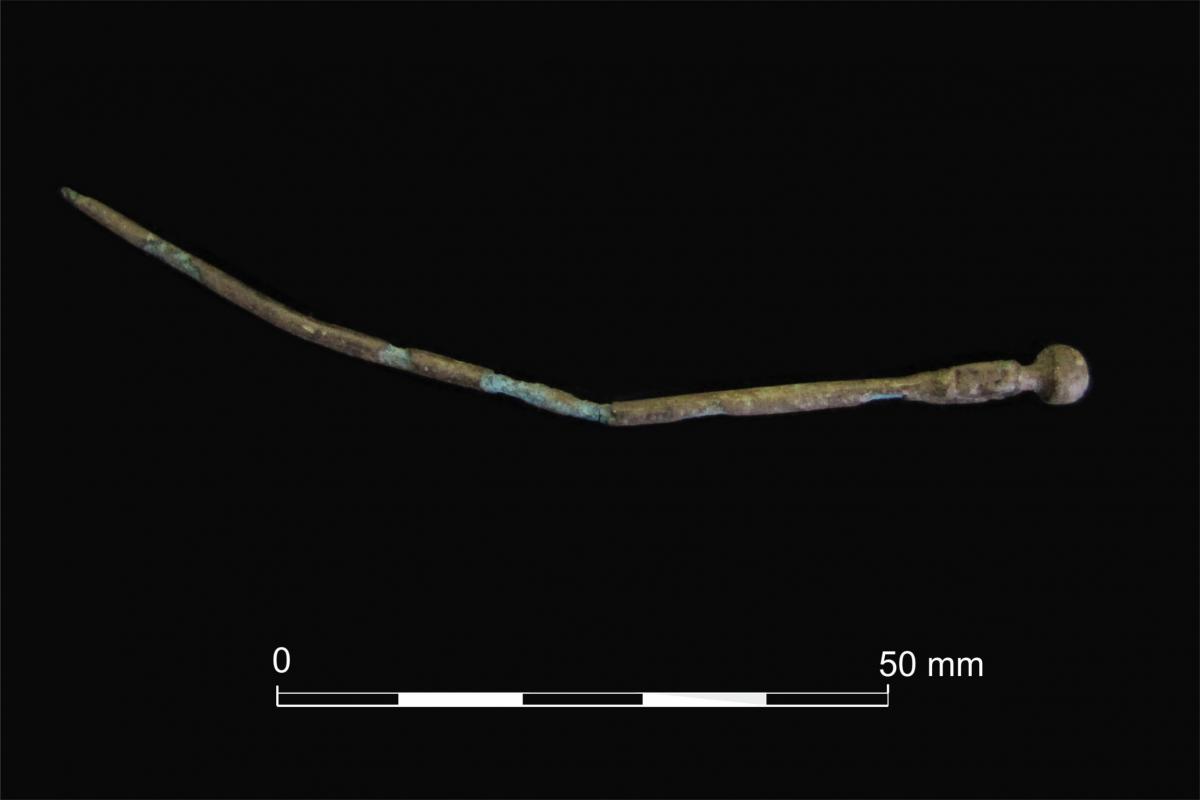The Wessex Archaeology Sheffield team recently completed fieldwork on a site close to where Milton Keynes borders the Aylesbury Vale. The two-hectare excavation was on behalf of CgMs Consulting and Gallagher Estates, focussing on the line of an assumed north-south Roman road adjoining Watling Street in Milton Keynes and five smaller areas targeting isolated cremations.
The site lies immediately to the south of the Roman town of Magiovinium, which is bisected by Watling Street, and the mitigation areas would have formed agricultural land outside the Roman town’s defences.
Last month, Andrew Norton, Regional Director North, presented the results of our work so far at the Milton Keynes Archaeology Day, held at the Church of Christ the Cornerstone in Milton Keynes.
The event was organised by Nick Crank, Senior Archaeological Officer for Milton Keynes Council and included talks, hands-on workshops and displays of finds from local groups.
Along the Roman road
Our work within the main site at Eaton Leys (Area A) confirmed the line of the assumed Roman road and revealed an adjoining ‘droveway’. The droveway would have funnelled stock from fields to the east to the narrower north-south road and on to market in Magiovinium. A cobble-lined hollow way to the north of the droveway produced some of the more interesting finds, including a copper alloy hair pin.
The line of the road was largely devoid of features other than three un-urned cremations. These are potentially evidence of the contraction of the town and disuse of the road or, alternatively, evidence of remembrance burials for local farmers keen to remain close to their stock on route to the afterlife market.
An isolated grave containing three vessels was the only evidence for activity within the site extending beyond the 3rd century AD.


Area A at Eaton Leys, and a copper alloy hair pin
Targeting cremations
All of the five areas of site that targeted cremations revealed relatively isolated graves, except for one; Area D in the centre of the site revealed nine graves on a natural ridge.
The graves comprised both urned and un-urned cremations, with all remains heavily truncated. They were of apparently relatively low status; no graves had any goods other than grog-tempered cremation urns. A four-post structure amongst the graves may be evidence of a monument or potentially a pyre.
Extending the site
With cremation deposits extending to the limits of Area D, a contingency buffer of 15 m was implemented to establish the full extent of the cemetery. Five 15 m buffers later, 60 cremation graves were revealed.
Most graves comprised urned deposits, with bone placed in grog-tempered vessels dating from the 1st century AD to 1st century BC; the absence of any obviously Roman vessels hints at a late Iron Age date for the cemetery.
With an apparent Iron Age cemetery of 60 individuals, and over 70 cremations in total, Eaton Leys has the largest concentrations of Iron Age/Romano-British cremations in Buckinghamshire.
The cremations are located on a headland with good views of Danesborough Hillfort, and once assessment and analysis of the site has taken place we will know more about the individuals buried within this significant landscape.